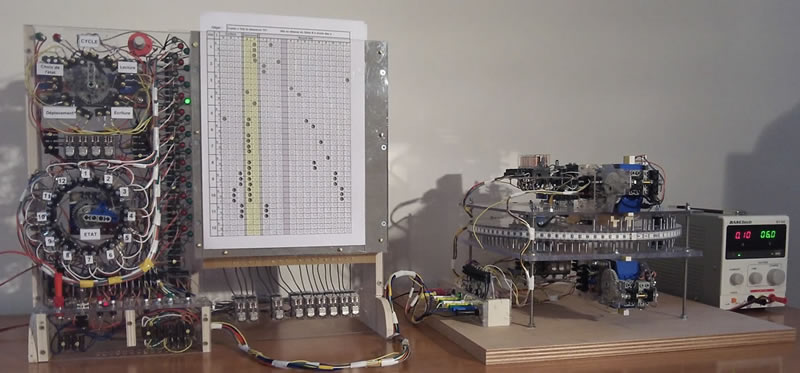Read/write: Difference between revisions
Amwelladmin (talk | contribs) No edit summary |
Amwelladmin (talk | contribs) No edit summary |
||
| Line 19: | Line 19: | ||
{{Sa}} | {{Sa}} | ||
*[[Construction]] in the sense of legal definitionry | |||
*{{Br|The Unaccountability Machine}}{{nld}} | *{{Br|The Unaccountability Machine}}{{nld}} | ||
{{c|language}} | {{c|language}} | ||
Revision as of 19:31, 5 August 2024
|
The JC’s amateur guide to systems theory™
|
As technologies have advanced they have moved from read-only (passive) to read/write (active, and interactive) while technologists and bureaucrats have endeavoured to shift our own language from interactive, interpretative and imaginative (write/read) to simple and passive symbol processing/data processing (read-only). Due to the interests of control in the face of increasing scale, bureaucrats are trying to shift from dynamic, complex systems to simple ones focused with no interaction, responsibility.
One-way communication is symbol processing. Code. A set of single instructions with no ambiguity that leads to a deterministic outcome. It is binary.
The very design of the Turing machine, at its core, is predicated on the impossibility of ambiguity. A switch is on or off. Open or closed. There is no third way. Nothing between 1 and 0. There is no “betweenness”.
If we introduced a “between” value — if code was written in tertiary, not binary, then what would that intermediate value represent? Maybe? Somewhat? You decide?
That a baffling amount of complicatedness emerges from binary code, if there is enough of it and it runs fast enough, should not obscure the fact that there is no decision, discretion or interpretative act conferred on the processor of code. Machines run code, they don’t interpret it. (I don’t want to call symbol-processing “reading” because reading is an inherently interpretative act. By sloppy use of our non-binary language — it is ambiguous — we may inadvertently impute to a signal processor feats of creative “reading” which it cannot perform.)
Recap: symbol processing is unidirectional. It has a mechanical, deterministic outcome. It is a simple system. It can be optimised, brute-force calculated, probabilised and, with enough processing power, solved. It is alpha go, or chess. A finite game.
A “natural language” read/write process — human construal — is, by contrast, and by necessity, a collaboration: an open, dynamic, incomplete, insoluble, complex system. It is undetermined; its rules, boundaries and participants change according to agencies beyond the control of any participant. A speech act can (from the speaker’s perspective) be misconstrued, ignored, disputed or reinterpreted. There is something ineffable here: it cannot be systematically analysed. It is beyond code: as insoluble to data science as consciousness is to philosophy.
Caught in a mesh of living veins,
In cell of padded bone,
He loneliest is when he pretends
That he is not alone.
We’d free the incarcerate race of man
That such a doom endures
Could only you unlock my skull,
Or I creep into yours.
- —Ogden Nash, Listen..., reprinted in Candy is Dandy: The Best of Ogden Nash
The larger an organisation is, the more that good governance demands it be run like a Turing machine. A sole trader can make whatever decisions she likes. An employer of five can comfortably delegate wide discretion to her staff, as she has good view of what they are doing. A firm of five thousand, this is clearly less so.
See also
- Construction in the sense of legal definitionry
- The Unaccountability Machine
